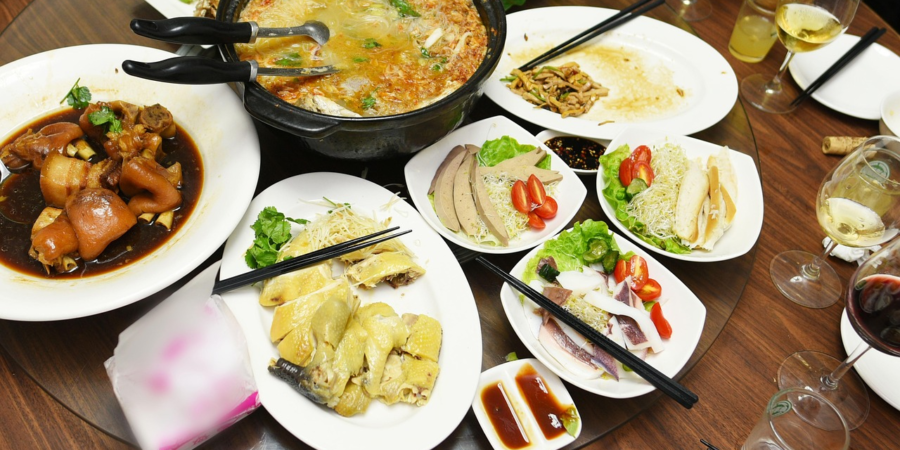Canada’s culinary landscape is a vibrant mosaic, reflecting its multicultural heritage and vast geography. From coast to coast, the country offers a rich array of flavors, shaped by Indigenous traditions, European influences, and immigrant communities. Among these, Chinese cuisine stands out as a cornerstone of Canadian dining, having evolved into a unique fusion that blends traditional recipes with local tastes. Meanwhile, the fine dining scene continues to push boundaries, with Montreal’s Mon Lapin earning the title of Canada’s best restaurant in 2024. This article explores the history and significance of Chinese cuisine in Canada and celebrates the excellence of Mon Lapin, offering a glimpse into the diversity and creativity of Canadian dining.
The Roots of Chinese Cuisine in Canada
Chinese cuisine in Canada, often called Canadian Chinese cuisine, has a history dating back to the mid-19th century. The first significant wave of Chinese immigrants arrived during the Fraser Canyon Gold Rush in the 1850s and later to work on the Canadian Pacific Railway, connecting Vancouver to Montreal (Canadian Chinese Cuisine). These early immigrants, primarily from Guangdong (Canton), faced limited access to traditional ingredients, leading them to adapt their recipes to local produce and Canadian preferences.
This adaptation gave rise to dishes that are now iconic in Canada but distinct from traditional Chinese cuisine. Chop suey, a stir-fry of meat, eggs, and vegetables in a thickened sauce, became a staple in Chinese restaurants across North America. Similarly, ginger beef, invented in Calgary in the 1970s by chef George Wong, features crispy beef strips coated in a sweet and spicy ginger sauce (CBC Radio). Other favorites include egg rolls, sweet and sour pork, and fried rice, which have become comfort foods for Canadians of all backgrounds.
The evolution of Canadian Chinese cuisine reflects the resilience and creativity of Chinese immigrants. Many who stayed after the railway’s completion opened small, affordable “Chinese cafés” or worked as cooks in mining camps and private homes. These establishments introduced Canadians to dishes tailored to local tastes, such as sweet and sour chicken balls, which are rarely found in China. Over time, as more Chinese immigrants arrived from diverse regions, the cuisine expanded to include more authentic offerings like dim sum, a Cantonese tradition of small plates such as shrimp dumplings and BBQ pork buns (The Canadian Encyclopedia).
Today, Chinese restaurants are ubiquitous in Canada, from rural towns to urban centers like Toronto’s Chinatown. They cater to a wide range of preferences, offering both Canadianized classics and regional Chinese specialties. This accessibility has made Chinese cuisine one of the most popular and enduring culinary traditions in the country.
Mon Lapin: A Culinary Masterpiece
While Chinese cuisine represents the comforting, everyday side of Canadian dining, the country’s fine dining scene showcases innovation and artistry. Mon Lapin, located at 150 Saint Zotique Est in Montreal’s Little Italy, was named Canada’s best restaurant in 2024 by Canada’s 100 Best Restaurants (Canada’s 100 Best). This accolade, determined by a panel of 150 judges including food critics, chefs, and restaurateurs, highlights Mon Lapin’s exceptional quality and influence.
Mon Lapin is the brainchild of husband-and-wife team Marc-Olivier Frappier (chef) and Vanya Filipovic (sommelier), who opened the restaurant in 2018. Joined by chef Jessica Noël and sommelier Alex Landry, the team has created a dining experience that is both sophisticated and approachable. The restaurant is known for its ever-changing menu of small plates, which emphasize seasonal, farm-fresh ingredients sourced from Quebec’s rich agricultural landscape (Vin Mon Lapin).
Diners at Mon Lapin can expect inventive dishes that blend French and Italian influences with a modern twist. Examples include roasted shallot strudel, veal with wild nettle, and other creations that highlight the region’s produce and proteins (OpenTable). The menu’s fluidity ensures that each visit offers something new, making it a favorite among Montreal’s discerning foodies.
The wine program at Mon Lapin is equally impressive, featuring a curated selection of natural wines that complement the food. Filipovic’s expertise as a sommelier shines through in the vibrant and eclectic bottles, which are paired thoughtfully with each dish. The staff’s deep knowledge of both the menu and the wine list enhances the dining experience, as servers guide guests through pairings with enthusiasm and precision (World’s 50 Best).
The atmosphere at Mon Lapin is a key part of its charm. The intimate space, with its wooden and marble tables and lowered lighting, exudes a lively yet cozy vibe. The upbeat music and energetic service create a welcoming environment that balances sophistication with accessibility. Since expanding in 2020 to include a neighboring storefront, Mon Lapin has maintained its neighborhood feel while accommodating a few walk-ins, though reservations are recommended due to its popularity (Condé Nast Traveler).
Mon Lapin’s consistent excellence has earned it accolades beyond Canada’s 100 Best, including a spot on the World’s 50 Best Discovery list. Its ability to deliver imaginative, delicious food in an unpretentious setting has solidified its reputation as a culinary gem.
The Broader Canadian Culinary Landscape
Canada’s dining scene is as diverse as its population, with each region contributing unique flavors and traditions. Chinese cuisine, with its widespread presence, is just one part of this tapestry. Indigenous cuisine, featuring ingredients like wild game, fish, and foraged plants, is gaining prominence as chefs incorporate traditional techniques into modern dishes. French Canadian cuisine, with its hearty poutines, tourtières, and maple syrup-infused desserts, remains a cultural touchstone, particularly in Quebec (Wikipedia).
Other immigrant communities have also left their mark. Italian, Indian, and Middle Eastern restaurants thrive across the country, offering everything from wood-fired pizzas to fragrant curries. Coastal regions like Nova Scotia and British Columbia excel in seafood, with dishes like lobster rolls and salmon showcasing the freshest catches (Travelsphere).
This diversity is what makes dining in Canada so exciting. Whether you’re enjoying a plate of sweet and sour pork at a local Chinese restaurant or savoring a multi-course meal at Mon Lapin, the country offers a wealth of culinary experiences that cater to every taste and occasion.
Table: Iconic Canadian Chinese Dishes
| Dish | Description | Origin |
|---|---|---|
| Chop Suey | Stir-fry of meat, eggs, and vegetables in a thickened sauce | North American Chinese |
| Ginger Beef | Crispy beef strips in a sweet-spicy ginger sauce | Calgary, 1970s |
| Egg Rolls | Fried rolls filled with vegetables and sometimes meat | Canadian Chinese adaptation |
| Sweet and Sour Pork | Pork in a tangy, sweet sauce, often with pineapple and peppers | North American Chinese |
| Fried Rice | Stir-fried rice with vegetables, egg, and often meat or shrimp | Adapted from Chinese fried rice |
Table: Mon Lapin Highlights
| Aspect | Details |
|---|---|
| Location | 150 Saint Zotique Est, Montreal, QC (Vin Mon Lapin) |
| Cuisine | French/Italian-inspired, farm-focused small plates |
| Key Dishes | Roasted shallot strudel, veal with wild nettle |
| Wine Program | Natural wines, curated by sommelier Vanya Filipovic |
| Awards | #1 on Canada’s 100 Best Restaurants 2024, World’s 50 Best Discovery list |
Conclusion
Canada’s culinary scene is a celebration of diversity and innovation, with Chinese cuisine and fine dining establishments like Mon Lapin playing starring roles. Canadian Chinese cuisine, born from the ingenuity of early immigrants, has become a beloved part of the country’s food culture, offering comfort and familiarity through dishes like chop suey and ginger beef. Meanwhile, Mon Lapin represents the pinnacle of Canadian dining, with its seasonal menu, exceptional wines, and inviting atmosphere earning it the title of Canada’s best restaurant in 2024.
As Canada looks to 2025, its food scene will undoubtedly continue to evolve, with new restaurants emerging and established ones pushing the boundaries of creativity. Whether you’re a foodie seeking the next culinary adventure or simply craving a familiar favorite, Canada’s dining landscape has something to offer everyone.



Leave a Reply